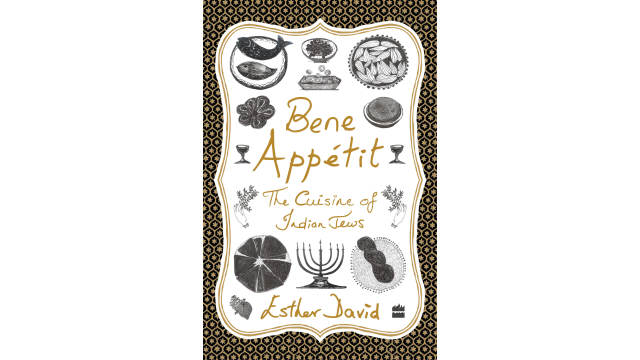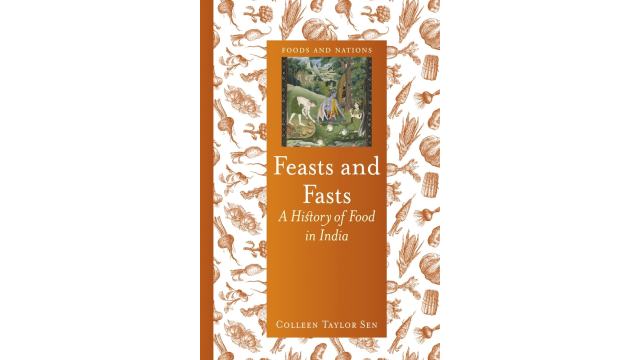How Sweet It Is

A decade ago, on a wet, cold morning in Brighton, my Gujarati flatmate plonked a jar of powdered sugarcane jaggery on our kitchen counter. She insisted I add a scoop of the sweet, caramel-hued crumbs to my coffee, instead of the white refined sugar I was reaching for.
“Gur is healthier,” she stated matter-of-factly, “and it will warm you up.” Far away from home, in a foreign land, her authoritative tone felt strangely endearing, though it was a complicated sweetness, like gur itself.
Refined sugar, stripped off all micronutrients during processing, amounts to empty calories. Gur, or jaggery, is the unrefined natural sweetener made by boiling either sugarcane juice or the sap extracted from various palms such as date, coconut, or palmyra. Though still highly caloric, it is considered more nutritious, rich in trace minerals and vitamins due to its molasses content.
Complicated Sweetness
Depending on the source of extraction, and the method and degree of processing, jaggery comes in a range of forms and textures, from solid rocks to fudge-like liquid, from powdered to granular. It can be set in molds or rolled into lumps, and its diverse flavor notes add complexity to its earthy sweetness. Gur is also extolled for its curative and fortifying virtues in traditional medicine and folk wisdom.
I was no stranger to gur, as it is cherished in Bengali homes too. But I had never added it to my coffee before. I complied, partly out of politeness but mostly out of curiosity. As I rolled the first sip of jaggery-laced instant coffee in my mouth, trying to decipher the “newness” in my morning cuppa, I felt a little more at home in the unfamiliar milieu of my new life. Years later in Chennai, on another rainy day, I learned that jaggery coffee is a favorite in south India when I encountered a cup of karupatti kaapi, or palm jaggery-infused coffee.
In Ayurveda, the madhura rasa or sweet taste is at the heart of all celebrations. Sweet dishes, traditionally prepared with jaggery, are offered in small portions to both gods and guests. In many subcontinental cultures, jaggery is symbolic of good tidings, auspicious beginnings and general wellbeing. It is traditionally eaten in moderation, its rich flavor more than compensating for smaller quantities in recipes.
At home in Kolkata, one could almost always find a small brass canister full of a sticky mush of treacle-brown akher gur, or sugarcane jaggery, among the motley assortment of pantry essentials in my grandmother’s mesh-doored meat safe, which stored everything but meat. A frugal eater, my grandmother often skipped the curries and fried dishes for a simultaneously austere and delightful dinner of dudh-ruti-gur: shreds of fresh, soft roti, added to warm milk along with a generous dollop of akher gur, which melted in gooey, caramelly streaks. Sometimes, she fried leftover rotis from the previous night to a crisp in ghee, then topped these with a dusting of crushed bheli gur: rock-hard balls of cane jaggery that she first broke down with a nora (muller). I always got a share.
During festivals, or whenever the mood struck, the gooey akher gur would be cooked to a fudge-like consistency with freshly scraped coconut and a pinch each of cardamom and edible camphor, then rolled into balls to make narkel nadu. During the Satyanarayan puja, gur would be added to shinni, a ritualistic offering of wheat flour, milk and bananas, all mixed by hand. Shinni is often garnished with nuts, raisins, grated coconut and gurer batasha, which are meringue-like candies made of whipped jaggery.
A boyam (jar) of gurer batasha always sat on the windowsill beside my grandfather’s bed. Before his afternoon siesta, especially during the sultry summer months, he would pop a batasha or two into his mouth and wash them down with a tall glass of water.
At the onset of summer, tart, raw mangoes were cooked with jaggery and roasted spices and coarsely ground to a sticky, glossy chutney called aam gur (mango jaggery), a favorite in Bengal. During our summer holiday stays at my aunt’s suburban home, my cousins and I would sneak out to the grove behind the house with a bowlful of stolen ingredients: a large ball of pulpy tamarind, green chiles, rock salt, and a dollop of gur. We mixed and mashed these with our hands to make a mouth-puckeringly delicious tentul makha (tamarind mash), best licked off the fingers. When kodbel, a variety of wood apple, are in season, a similar makha is made with its seed-studded pulp.
Versatile Sweetener
Come winter and sugarcane jaggery would be enthusiastically replaced by fragrant khejurer gur, or date palm jaggery, also referred to as nolen gur (new jaggery) that enjoys an exalted status in Bengali gastronomy. Whether as hard patali set in bowl-shaped moulds, or as the luscious, golden syrup-like jhola gur, sweet-scented khejurer gur is the essence of Bengali winters. Few things match the joy of eating crisp, flaky parathas or piping hot luchis with jhola gur on cold nights. I always end such meals with a leisurely sip of the ambrosial gur straight from the bowl and savor its sweet apricity as it spreads through the body.
In my kitchen, I drizzle gur on pancakes, fold into buttercream frosting, and — in a curiously successful culinary experiment — have added it to a marinade for sticky chicken wings. Gur adds a whole new depth of flavours to savoury dishes, whether in a variation of sambar, unctuous Mangalore ghee roast, or Punjabi-style khatta meetha kaddu, a tangy and spicy pumpkin dish.
Its energy density and perceived heating properties makes gur a prized pantry essential during the harsh north Indian winters. Marrying into a Punjabi family opened up a whole world of jaggery-infused winter treats: gur ki rewri, small pellets of sesame seeds and jaggery; gurpara, jaggery-crusted deep-fried dough; gajak, or brittle, made of nuts and jaggery; homely parathas stuffed with fennel seed-flavored jaggery; and jaggery-coated makhana or foxnuts.
Sugarcane grows in abundance in Punjab, and gur is an intrinsic part of the cuisine and culture. There’s an old Punjabi saying, that a Jatt, as farmers are called in the region, won’t allow anyone to steal his sugarcane, but if asked politely, he will gladly part with a ball of jaggery.
The quintessential Punjabi winter dish — makki ki roti (cornmeal roti) paired with sarson da saag (mustard greens cooked with spices and a creamy finish) — is incomplete without hot ghee and a small mound of crushed jaggery. The complex sweetness of gur pairs beautifully with the savory notes of the saag. The crusty makki ki rotis lathered with white butter and topped with a dusting of crumbled gur are just as good.
But nothing quite matches the pleasure of a spoonful of the gur ka halwa that I sampled on a recent trip to Amritsar. An unctuous concoction of fine semolina, ghee and gur, jazzed up with a nutty mix of slivered almonds, cashews and muskmelon seeds, it’s pure love. “Gur nalon ishq a mitha,” goes a famous Punjabi song, signifying a love sweeter than gur. Perhaps. But while love might sometimes disappoint, gur ka halwa never will.
Key Takeaways
- Jaggery works better than refined sugar.
- It is versatile and can be paired with savory dishes.
- Jaggery has minerals and iron in it.



